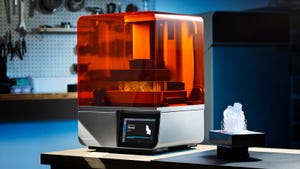Engineer Guy's Bill Hammack explains the history of injection molding and how the process works in this classic 10-minute video.
January 13, 2023
Chances are you have seen some of Bill Hammack’s videos archived on his Engineerguy.com channel on YouTube, but maybe it’s been a while. For this Throwback Thursday segment, I invite you to a repeat viewing of his introduction to injection molding. Never seen it? All the better!
So, here’s a question: What does injection molding have to do with billiards? Hammack answers that question in the first minute of the almost 10-minute video. “In the 19th century,” he explains, “billiard balls were composed of ivory, harvested from the tusks of elephants. This devastated the elephant population, so a billiards manufacturer offered a $10,000 prize for a replacement for ivory.” John Wesley Hyatt won the prize — worth around $3 million in today’s money — by patenting a system to mold billiard balls from celluloid. And the plastics revolution had begun.
There are plenty more fun facts in this video, along with animations explaining the injection molding process. The video, which was first posted on YouTube in 2015, has been seen by more than 2.8 million viewers so far. Even if you are well-versed in the history of plastics injection molding and, certainly, how it works, you may find this video helpful as a visual aid the next time a niece or nephew asks, “So, what is your job, exactly?” Not only will they learn something about the awesomeness of your craft, but they will be entertained in the process.
You’re welcome.
About the Author(s)
You May Also Like




